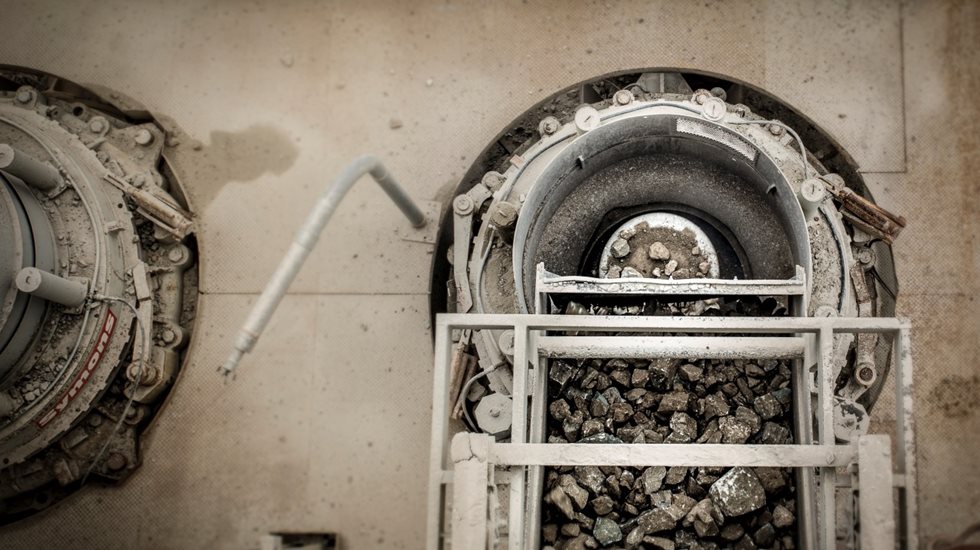As the dirty oil flows over the bearing surfaces within the crusher, it tends to act as a lapping compound, sanding down the bearing surfaces and resulting in severely worn components and excessive bearing clearances. This leads to the unnecessary replacement of very expensive crusher components. At minimum, lube system maintenance checks, inspections or servicing must include the following steps:
1. Monitoring of lube oil temperature
A lot can be learned about a cone crusher by simply watching the supply oil temperature and comparing it to the return oil temperature. Return oil temperature should be in the range of 60~140ºF (15~60ºC), although ideally in the range of 100~130ºF (38~54ºC).
In addition, oil temperature should be monitored frequently throughout the shift. Once a producer learns a crusher's normal drain line oil temperature and the normal temperature differential between the supply and drain, an abnormal condition warrants an investigation.
2. Monitoring of lube oil pressure
It is critically important to watch the countershaft box lube oil pressure throughout each shift. Some of the things that could cause a lower-than-normal lube oil pressure are a low gallon-per-minute oil flow rate caused by a worn lube oil pump, a faulty, mis-set or stuck-open main relief valve, or having excessive bearing clearances within the crusher caused by bushing wear.
Monitoring countershaft box oil pressure throughout each shift gives you the opportunity to learn what normal is. Once normal has been established, corrective action can be scheduled and taken based on an abnormal condition.
3. Inspection of the lube oil tank return screen
An oil tank return screen – typically about 10 mesh in size – is fitted into the lube oil tank. All returning oil flows through this screen, and it's important to note that oil is the only thing that should go through this screen.
The function of this screen is to prevent large contaminants from entering the lube oil tank and possibly being drawn into the suction line of the lube pump. Any unusual-looking debris found on this screen warrants closer investigation. The oil tank return screen should be inspected daily or every eight hours.
4. Commitment to an oil analysis program
Today, oil analysis has taken its place as an indispensable and valuable element of crusher predictive maintenance. There is only one thing that will wear out the inside of a rock crusher, and that is "dirty lube oil". Clean lube oil is the most important factor affecting the service life of the internal crusher components.
Participating in an oil analysis program gives you the opportunity to watch the condition of the lubricating oil throughout its service life. An active drain line oil sample should be taken once per month, or every 200 hours of operation, and sent in for analysis.
The five main tests completed in the analysis include viscosity, oxidation, water content, particle counts, and machine-wear. An oil analysis report that shows an abnormal condition gives the opportunity to investigate and correct the problem prior to failure. Remember, contaminated lube oil "kills" crushers.
5. Maintenance of clean crusher air breathers
The countershaft box air breather and the oil tank air breather work together to allow the crusher, oil tank and a properly pitched drain line tube to maintain atmospheric conditions. Clean air breathers assure unrestricted drainage of the lube oil and help to prevent dust infiltration through the head sealing arrangement.
Air breathers are commonly neglected components of the lubrication system. Air breathers should be inspected weekly, or every 40 hours of operation, and changed or cleaned as required.

